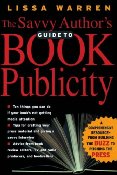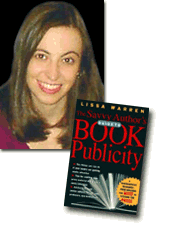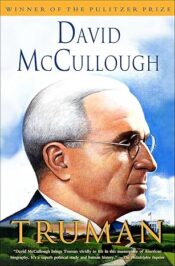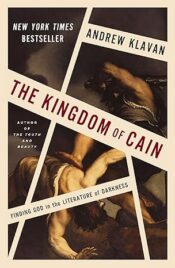
The Savvy Author’s Guide To Publicity
I have a confession to make. I like publicists, and I especially like Lissa Warren, who I have learned since “meeting” her, is one of the best in the business. I’ve had the pleasure of corresponding with a lot of them over the past couple years since starting WWTFT. However, I will always have a warm spot in my heart for Ms. Warren. Last summer, I decided to see if I could get a new book that was coming out by Harlow Giles Unger. It was a Sunday afternoon and after some digging I made a guess as to what Ms. Warren’s email address might be, and timidly requested consideration for a review copy of Unger’s book. Much to my delight, within minutes of sending the email, she responded and not only promised to send me the forthcoming book, but immediately made arrangements to send me 2 of his other books, since the book I’d requested wasn’t yet available. Wow! Since then, I’ve reviewed numerous books from De Capo Press, and have plans to review many more. Because of her kindness, I’ve since established contact with many publicists (they seem to be a universally great group of people) and we’ve reviewed almost 100 books here at WWTFT.
Curious about this paragon of publicity, (she’s called out by name in several of Unger’s books, and even has one dedicated to her), I discovered that she has written a book targeted at authors, which I promptly purchased and read (twice).  (It’s taken me far too long to get around to the review.) It’s her book I will review below. But, I thought it only fair to come clean, as this review can’t help but be just a little bit biased! Now on to the review.
 The Savvy Author’s Guide To Publicity is an eminently practical guide to authors who want to sell books. (You could probably surmise as much from the title.) In today’s world, there’s an awful lot of competition out there for eyeballs. Getting your book written and then published is only the first step! (I hope Warren will write a follow-up book on this step too!)
The Savvy Author’s Guide To Publicity is an eminently practical guide to authors who want to sell books. (You could probably surmise as much from the title.) In today’s world, there’s an awful lot of competition out there for eyeballs. Getting your book written and then published is only the first step! (I hope Warren will write a follow-up book on this step too!)
Her book starts mostly from the premise that you have written a book, and it’s been published by a house like De Capo. However, much of what she has to say is just as applicable if you’ve gone the self-publishing route.
Warren’s creative writing degree comes through loud and clear in her matter-of-fact, conversational style. In fact, she writes as though she’s speaking frankly with the reader, versus simply talking at them.  I’m not an author (yet), but was able to find much of interest in the book. She provides an interesting overview of the whole publishing process and the different roles involved in getting a book to market. After all, that’s what it’s all about, making money. As she points out in one section, gone are the days (if they ever existed) of publishing a book just because it should be published.
Warren’s observations on the world of book publishing stem from years of experience and are necessarily publicist-centric. According to her, the publicist is the hub of the whole process. Authors get handed off from editor to publicist, and the better that process flows, the more successful the book is likely to be. However, Warren admits, that good books can sometimes succeed without publicists, if they are able to obtain the elusive “buzz.”
More commonly, however, the success of a particular book is due to the hard work put in by the author and his publicist. Warren lays out a wealth of practical information on a variety of topics on everything from book tours, television interviews, and web-marketing to hiring a free-lance publicist on your own. (Be careful not to – in her words – “piss off” your publicist, when doing so.)
So, what does a book publicist do? Well, they make sure an author’s book gets as much exposure as they can manage to get it. This includes:
- Getting the book to print and broadcast media outlets
- Writing press releases
- Booking tours
- Coddling authors
- Making lots of phone calls and sending a lot of email
And, of course, a host of other things. Warren says that if the publicist is doing things right, their job is never done, if not, your book is! Sadly, she admits that not every publicist “can or will” work hard on every book. That’s where the author comes in to help manage his own destiny.
Warren lays out a series of practical chapters on the author’s transition from his role as writer to his role as publicist. Unbeknownst to many authors, writing a book is only the start. For it to go anywhere, the author has to assume a lot of responsibility for making it happen. In effect, they become their own best asset in partnership with their publisher’s publicist.  Each of the chapters in The Savvy Author’s Guide is designed to provide practical information that will help an author understand what happens to his book once it’s off the press, and even a little before that.
In the first chapter, Warren gives a high level overview of book publicity, explains why it is essential in getting readers to buy books, and talks about the different kinds of books and which sorts of publicity work best for each. There are publicity-driven books, which are trendy, timely or written by famous big shots; and there are word-of-mouth driven books. In her down-to-earth style, Warren explains, “The best way to generate word-of-mouth: write a damn fine book.”
In this same chapter, Warren also goes into the role played by book reviews. I found this particularly interesting since book reviews are one of the things that we pride ourselves on at WWTFT. We don’t review a book unless we’ve read it, and we try to give each book it’s due. However, this is not always the case with all reviews other places. Apparently, book coverage is on the wane, and Warren attributes this to a lackluster economy. With the decline in the amount of space and staff dedicated to book reviews, many are merely descriptive rather than commanding.
“This is the tale of a man who goes hunting” versus “This is a book you must go out and buy!”
The second chapter of The Savvy Author’s Guide provides a great overview of what a new author can expect once he’s moved into the self-promoter stage of the process. Warren explains the transition from editor to publicist, what galley proofs are (and why they cost so much), what ARC’s (Advanced Reading Copies) are, and how an author questionnaire is used behind the scenes to inform PR choices. In some cases, an author may have access to important contacts that the publicist does not. Getting the book “out there” is a partnership between author and publicist. No one cares about an author’s book more than the author.
 There are lots of milestones in the process. Some of these are mailing dates, catalog production, the publication date, the release date, and the on-sale date. All of these carry different implications and impose different demands on the author-publicist partnership. Timing is everything.
There are lots of milestones in the process. Some of these are mailing dates, catalog production, the publication date, the release date, and the on-sale date. All of these carry different implications and impose different demands on the author-publicist partnership. Timing is everything.
Finally, there is the point at which a book goes into “maintenance mode” from a publicist’s standpoint, anyway. This is often difficult for an author to come to terms with. It is the point at which media inquiries about a book have tapered off and the “buzz” has died down. When this stage commences, the book will sell (or not) at a slow and steady rate and there isn’t much else a publicist can do for it. There are obvious exceptions to this – a movie comes out or a book becomes suddenly topical again because of a current event.
Ever thorough, Warren even describes the differences between the publishing of the paperback and the hardback. The level of publicity effort assigned to the former is a fraction of that of the latter. There’s more money in hardbacks.
Chapter 3 deals with the considerations involved in deciding whether or not to hire an outside publicist. Sometimes it makes sense, and sometimes it does not. Warren reminds the reader that time is of the essence, because “the window of opportunity is small when it comes the media.”
Warren provides some basic rules of thumb on selecting a freelance publicist, ballpark pricing, and even a list of some reputable PR firms. This chapter also gives an overview of radio and TV tours. Once again, Warren is all about practical advice, such as “if you’re asked a stupid question, just answer the question you should have been asked.” There is a wealth of other information which lists media coaches, lecture agents, and web marketers.
Chapters 4 and 5 are probably chapters that Warren wishes she could mandate that authors read. In them she describes how to get the most out your publicist and outlines her ideal! However, although it’s not a completely one-sided view - asking for macaroons and a massage (well a gift-certificate for one, anyway) was rather amusing.
Back to practicality, aside from the benefits of being nice to your publicist, there are other things that an author can do to help his publicist succeed (and by extension, make his book succeed). These include researching appropriate media for the book. As mentioned above, an author may have contacts in particular communities and professions that would be of use to the publicist. Another thing an author can do is to research other recent books on similar topics to see where they were reviewed.
 Warren also suggests writing articles for magazines and newspapers, and keeping track of current events. Sometimes things transpire in the world which may be relevant to the book and provide good traction. In addition to writing articles, an author may be called upon to write excerpts, Q & A, press-kits, summaries, or even to provide a video of himself giving a presentation or speech. The latter may be used to convince a media-type to do an interview.
Warren also suggests writing articles for magazines and newspapers, and keeping track of current events. Sometimes things transpire in the world which may be relevant to the book and provide good traction. In addition to writing articles, an author may be called upon to write excerpts, Q & A, press-kits, summaries, or even to provide a video of himself giving a presentation or speech. The latter may be used to convince a media-type to do an interview.
Chapter 6 continues with still more practical information about media tours. It contains a mix of insights and things that should be common sense, but probably aren’t. Invest in a good travel alarm; be where you’re supposed to be when you’re supposed to be there. Be nice and gracious, etc. But Warren also provides lists of contacts for various and sundry services as well as a substantial list of book fairs, festivals, and other events for consideration prior to scheduling a tour.
The next chapter is a compendium of frequently asked questions – see my earlier note on chapters 4 and 5. If you’re a first time author, study this chapter and make your publicist happy.
Warren covers several main topics in her FAQ:
- Questions about the media
- Questions about bookselling
- Questions for or about your publicist
- Miscellany
- How do I get more copies of my book?
- What if I know of a professor who might assign my book?
- Should I throw a launch party?
- Do I need a Web site for my book?
- Will my book be automatically entered for relevant award competitions?
- etc.
If you want to know the answers to these and many other questions, you’ll have to read the book!
I found chapter 8 especially interesting because it covered interviewing from the author’s perspective. I’ve done several author interviews this year, with a variety of interesting writers. Apparently, interviews are a hit or miss affair, often times the person doing the interview has not read the book! This is to be expected, in fact. Warren offers advice on how to get through these and what to expect from the process. I was able to glean some information from this chapter which may help me conduct future interviews more efficiently. I also got nice validation that I’m doing some things right.
Thoroughness and practicality again come through. Warren provides a perspective on radio, TV, phone, and print interviews. She gives tips and advice and also lets the uninitiated know what to expect in a series of taped rapid fire TV interviews.
The elusive, but much sought after “buzz” referred to earlier in this review, is the topic of chapter 9. In it, Warren admits that even publicists aren’t completely sure how to manufacture it. According to Warren, there seem to be two ways of getting buzz. One is to reach out directly to readers, and the other to book sellers. For reasons of brevity, we’ll skip the latter, but the former is germane to WWTFT. Web campaigns are a big part of reaching out to readers.
Warren encourages authors to assist their publicist in doing web outreach to places like WWTFT. Authors may also wish to purchase access to mailing lists or even “Big-Mouth” mailings. (Big mouths are key people who be willing and able to spread the word about a book – they are people with a platform or bully pulpit.) Reading groups are another avenue for getting the word out. Warren points out that an estimated 2% of Americans belong to a reading group – and that’s a lot of people.
I found chapter 10 a little confusing. In it Warren describes the best ways of pitching your book. However, it seems to be a little bit in conflict with earlier chapters, wherein she warns authors about pushing their book overtly with members of the media. This chapter seems more geared to the publicist proper, than to the author. However, the information is interesting. She even explains 5 methods of effectively pitching a book and provides written examples.
The final chapter is entitled: Ten Things to Do If Your Book’s Not Getting Media Attention. It does just that, and provides a short list. Interestingly enough, the first thing Warren recommends is an honest appraisal.
The book concludes with a robust appendix of resources, including such things at sample letters, press releases, and press kits with their attendant components. Warren even provides sample interview questions!
All in all, The Savvy Author’s Guide is an informative and interesting book to read. Even though I have yet to join the ranks of published authors, I found the book to be useful. It’s well-written and definitely practical – especially if you’re an author.
 The posts are coming!
The posts are coming!


2 comments
I enjoy reading your book reviews because you obviously have read them and have worked to understand and genuinely represent the authors. I appreciate the introductions and information. I also enjoy your writing style. I read many of your reviews but often don’t leave a comment–mostly because I don’t have more to say than to express my appreciation. I enjoy your Web sit. 100 Books! Wow.
[Reply]
Martin Reply:
October 18th, 2011 at 12:26 pm
Thanks Quinn, I’m glad that they are of interest. We spend a lot of time on the reviews and use them as a means of retaining what we’ve read. I especially appreciate readers like you. (You may have been one of our very first readers and commenters!) I am always pleased to see you’re still among the audience.
[Reply]
Leave a Comment